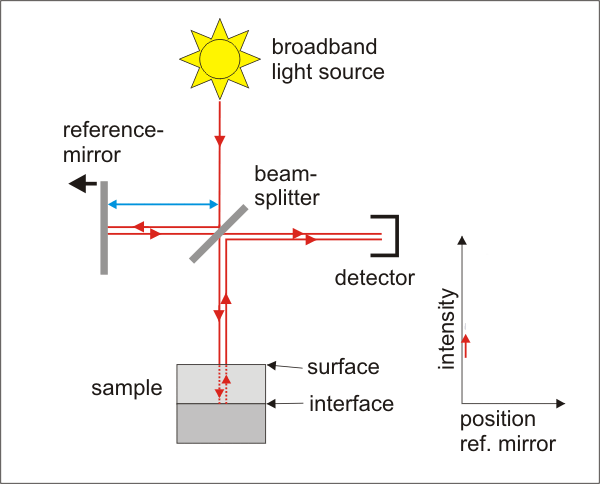

Hypertext and Hypermedia
Class no. 1 - HTML and CSS
Gdansk University of Technology
Faculty of Electronics, Telecommunications and Informatics
Menu
The OCT principles of operations
The OCT measurements are based on a selective detection of the light backscattered from the particular scattering points located the investigated object, which is needed for 2D and 3D tomography imaging. To perform such measurements, low-coherence interferometry (LCI) is applied. The LCI, also known as white-light interferometry (WLI), is an attractive measurement method offering high measurement resolution, high sensitivity and measurement speed. Unlike classic interferometry, where ambiguity of measurement result often exists, LCI can provide unambiguous (i.e. absolute) measurement result relatively easily. An example of OCT setup has been shown in Fig. 1.

Low-coherence light emitted by the broadband source is divided into two beams by a beam splitter and guided into two interferometer arms. One of the beams is focused on the investigated sample and the other one is guided into a moving reference mirror. The light reflected back from the sample interferes with the beam reflected by the mirror. The interference fringes can be detected only if the optical path lengths difference in the interferometer arms is not bigger than the coherence length of the source. The interference signal can be seen in the Fig. 1.